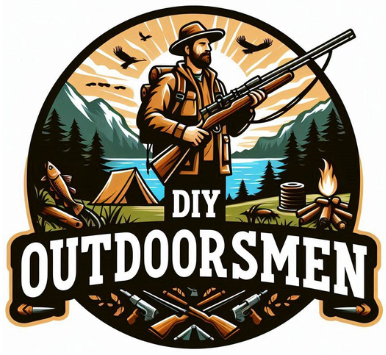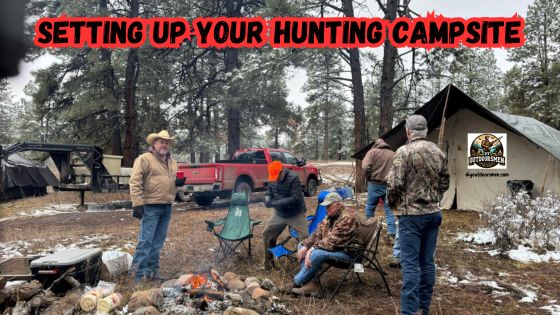Contents
Finding the perfect spot for your hunting campsite is crucial. It’s all about balancing accessibility, safety, and proximity to your hunting grounds. Here’s a quick guide to make sure you’re picking the right location.
QUICK LOOK: 3 Tips to Setting Up Your Hunting Campsite
- First, research potential spots thoroughly. Use maps, online resources, and local guides to gather all the info. Understanding the lay of the land before you even step foot on it can save you a lot of headache. Look for areas that offer natural shelter and have good drainage to avoid water pooling in your tent during unexpected rains.
- Get a good sense of the terrain and weather conditions. You want a campsite that’s relatively flat and free from hazards like falling rocks or dead trees. Make sure to pick a location with some elevation if you’re in a flood-prone area. Check weather forecasts and keep in mind seasonal weather patterns. It’s no fun getting snowed in or washed out.
- Proximity to game trails is key. Being near water sources and food supplies will attract wildlife, increasing your chances for a successful hunt. However, don’t set up too close to water sources to avoid disturbing animals or risking contamination. Keeping a respectful distance ensures you don’t scare off potential game or disrupt their natural habits.
Essential Gear for Your Campsite
Having the right gear is non-negotiable when setting up an efficient hunting campsite. Here’s a rundown of the essentials to make sure you’re well-prepared for the wilderness.
- First up, shelter options and setup. A durable tent that can withstand the elements is a must. Look for something that’s easy to set up with strong stakes and rainfly cover. Don’t skimp on a good sleeping bag and pad; comfort keeps you sharp and ready for the hunt. Consider also bringing a tarp or bivy sack for additional protection from the weather.
- Next, cooking equipment needs to be compact yet functional. A lightweight camping stove and fuel canisters are your best friends. Don’t forget utensils, a pot or pan for cooking, and a lightweight, collapsible cooler. Pack meals that require minimal prep—think dehydrated meals, canned goods, and protein bars. This saves time and keeps your pack light.
- Never overlook first aid and emergency supplies. A comprehensive first aid kit tailored to wilderness needs is vital. Include items like antiseptics, bandages, tweezers, and any personal medications. Also, pack a reliable multi-tool, a whistle for emergencies, and fire-starting tools like waterproof matches or a fire starter. These items can make a huge difference in an emergency situation.
Bringing the right gear ensures you’re ready for anything the wilderness throws at you. From setting up a reliable shelter to preparing meals and handling emergencies, these essentials form the backbone of a comfortable hunting campsite, and a successful hunting trip.
Campsite Setup and Organization
Creating distinct zones for different activities can make your hunting campsite much more efficient. Set up separate areas for sleeping, cooking, and cleaning. This not only keeps things organized but also reduces the chance of accidents, like knocking over a cooking stove or contaminating your sleeping area with food smells.
Efficient packing and storage solutions are vital. Use color-coded or labeled bags to store equipment so you can find what you need quickly. Keep essential items like your first aid kit and flashlight easily accessible. Hang food bags high off the ground and away from your sleeping area to avoid attracting wildlife.
Maintaining cleanliness and safety can’t be overstated. Follow the Leave No Trace principles by cleaning up after yourself and disposing of waste properly. Always have a designated spot for trash and make sure to pack it out. Keeping your campsite tidy not only makes life easier but also minimizes your impact on the environment.
Food and Water Management
Having adequate food and safe drinking water is crucial for your hunting campsite and trip. Here’s how to manage them efficiently.
- First, identify safe water sources and purification methods. Natural sources like streams and lakes can be handy, but always treat the water before consuming it. Bring along water purification tablets, a reliable filter, or a portable UV purifier to ensure the water is safe. Boiling water is also a surefire way to kill pathogens if you have the means to build a fire.
- Non-perishable food options are your best bet. Think of items like dried fruits, jerky, nuts, instant noodles, and other ready-to-eat meals. These can be easily stored and don’t require refrigeration. Meals that need just hot water are ideal because they’re quick and hassle-free after a long day of hunting.
- Waste disposal practices are essential. Keep all food scraps and waste away from your sleeping area. Use bear-proof containers if you’re in bear country and always follow local regulations for waste disposal. Digging a small pit for biodegradable waste can be a good option in some areas, but ensure it’s away from camp and water sources.
Safety and Survival Tips
- Basic wilderness survival skills can be life-saving. Knowing how to build a fire, identify edible plants, and create shelter from natural materials can turn a potential disaster into a manageable situation. Practice these skills beforehand so you’re prepared when it counts.
- Animal safety precautions are a must. Store food properly and hang it high to avoid attracting animals. Know the local wildlife and understand how to react if you encounter them. For example, make yourself large and loud to scare off black bears, but stay calm and back away slowly if you encounter a moose.
- Navigation and communication methods should be in place. Always carry a map and compass, even if you have a GPS device. Gadgets can fail, but basic navigation skills are reliable. Also, make sure someone knows your location and expected return time. Carry a satellite phone or personal locator beacon for emergencies.
With these safety and survival tips in your toolkit, you’ll be better prepared for anything the wild throws your way. By staying alert and ready, you can focus on enjoying your hunting campsite, and hunting trip, and making it a success.
Check Out Our Latest Camping Articles:
- 5 Things To Look For In A Backpacking Sleeping Bag
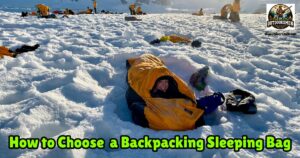
- 10 Tips for Delicious And Easy Camping Meals

- Camping With Kids: Fun Activities And 7 Tips For A Successful Trip
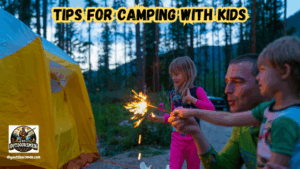
- Top 10 Most Scenic Camping Spots In The US

- Essential Gear For First-Time Campers
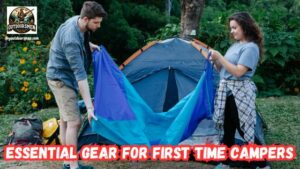
- 7 Wilderness Knots Every Outdoorsman Should Know

As always, stay safe, enjoy the journey and please try to leave it cleaner than you found it. If you have any comments, questions, ideas, or suggestions please leave them in the comment section below and I’ll get back to you ASAP. You can follow us on YouTube: Man Art Creations for videos of our DIY Adventures.
P.S. – Thanks so much for checking out our blog we really appreciate it. Just so you know, we may receive a commission if you click on some of the links that appear on our site. This helps us keep our content free and up-to-date for everyone. We appreciate your support!
